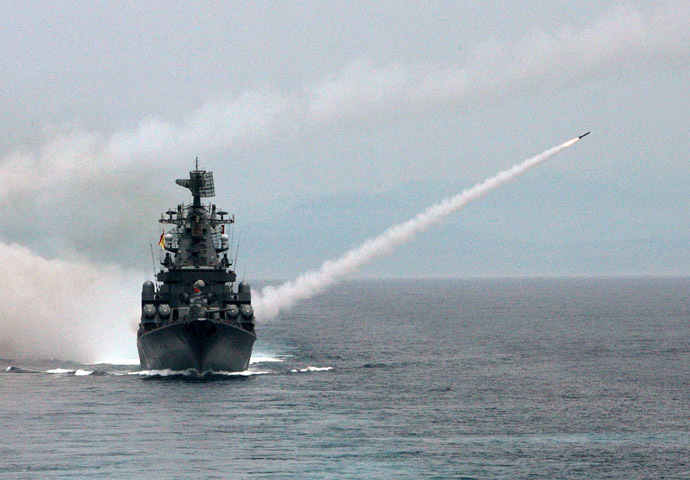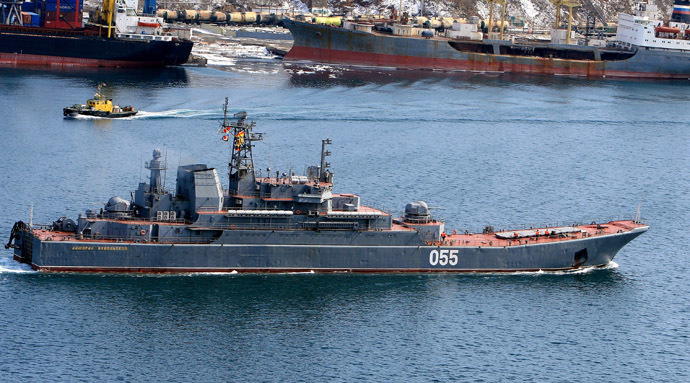Russia’s ‘carrier-killer’ Moskva enters Mediterranean
Edited time: September 11, 2013 18:11
“The Black Sea flagship entered the Russian Navy's area of responsibility in the Mediterranean at 11:00 pm Moscow time yesterday," the agency reported a military source as saying.
The missile-carrying cruiser is expected to join its final destination in eastern Mediterranean on September 15 or 16.
Upon arrival, the command of the Russian Navy unit in the Mediterranean, currently stationed onboard the Admiral Panteleyev anti-submarine ship, will be relocated to the Moskva.
"The armaments and technical equipment of the missile cruiser are in working condition. The crew is ready to perform combat missions,” the source said.
‘Moskva’ weaponry
-16x SS-N-12 Sandbox anti-ship missiles
- 8x8 (64) S-300PMU Favorit (SA-N-6 Grumble) long-range surface-to-air missiles
-2x20 (40) OSA-MA (SA-N-4 Gecko) SR SAM
-1x twin AK-130 130mm/L70 dual-purpose guns
-6xAK-630 close-in weapons systems
-2x RBU-6000 anti-submarine mortars
-10x (2 quin) 533mm torpedo tubes
Armor: Splinter plating
Aircraft carried: 1 Ka-25 or Ka-27 helicopter
Russia’s Defense Ministry has said the maneuvers are part of the“stage-by-stage rotation of warships and support ships of the standing naval force in the Mediterranean.”
The recent deployments are aimed at “complex monitoring” of the situation around Syria, military sources told Interfax earlier.
Russia’s standing naval force in the Mediterranean now involves landing craft carriers “Aleksandr Shabalin,” “Admiral Nevelskoy,” “Peresvet,” “Novocherkassk” and “Minsk” of Russia’s Black and Baltic Sea Fleets, as well as escort vessel “Neustrashimy,” and the anti-submarine ship “Admiral Panteleyev.”
Previously, Russia’s defense officials cautioned against making connections between the relocation of warships and the Syrian crisis, saying the maneuvers do not depend on the situation and “will continue after it.”








No comments:
Post a Comment